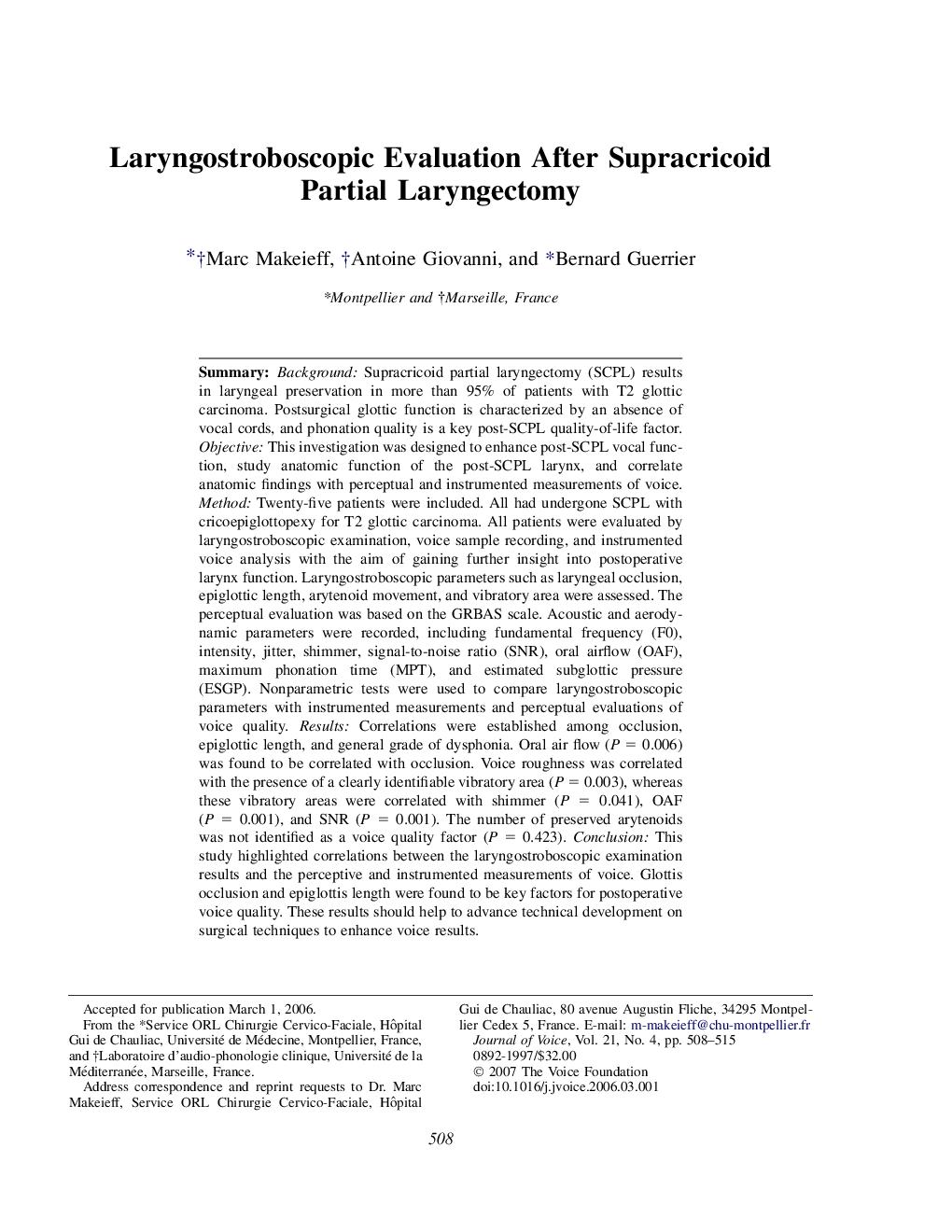| کد مقاله | کد نشریه | سال انتشار | مقاله انگلیسی | نسخه تمام متن |
|---|---|---|---|---|
| 1102776 | 953624 | 2007 | 8 صفحه PDF | دانلود رایگان |

SummaryBackground: Supracricoid partial laryngectomy (SCPL) results in laryngeal preservation in more than 95% of patients with T2 glottic carcinoma. Postsurgical glottic function is characterized by an absence of vocal cords, and phonation quality is a key post-SCPL quality-of-life factor. Objective: This investigation was designed to enhance post-SCPL vocal function, study anatomic function of the post-SCPL larynx, and correlate anatomic findings with perceptual and instrumented measurements of voice. Method: Twenty-five patients were included. All had undergone SCPL with cricoepiglottopexy for T2 glottic carcinoma. All patients were evaluated by laryngostroboscopic examination, voice sample recording, and instrumented voice analysis with the aim of gaining further insight into postoperative larynx function. Laryngostroboscopic parameters such as laryngeal occlusion, epiglottic length, arytenoid movement, and vibratory area were assessed. The perceptual evaluation was based on the GRBAS scale. Acoustic and aerodynamic parameters were recorded, including fundamental frequency (F0), intensity, jitter, shimmer, signal-to-noise ratio (SNR), oral airflow (OAF), maximum phonation time (MPT), and estimated subglottic pressure (ESGP). Nonparametric tests were used to compare laryngostroboscopic parameters with instrumented measurements and perceptual evaluations of voice quality. Results: Correlations were established among occlusion, epiglottic length, and general grade of dysphonia. Oral air flow (P = 0.006) was found to be correlated with occlusion. Voice roughness was correlated with the presence of a clearly identifiable vibratory area (P = 0.003), whereas these vibratory areas were correlated with shimmer (P = 0.041), OAF (P = 0.001), and SNR (P = 0.001). The number of preserved arytenoids was not identified as a voice quality factor (P = 0.423). Conclusion: This study highlighted correlations between the laryngostroboscopic examination results and the perceptive and instrumented measurements of voice. Glottis occlusion and epiglottis length were found to be key factors for postoperative voice quality. These results should help to advance technical development on surgical techniques to enhance voice results.
Journal: Journal of Voice - Volume 21, Issue 4, July 2007, Pages 508–515